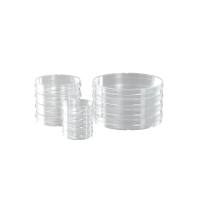Alveolar type II pneumocytes (alveolar type II cells; TII cells) play an important role in the homeostasis of the alveolar unit. They are the progenitor cells to the type I pneumocyte and are therefore responsible for regeneration of alveolar epithelium following alveolar epithelial cell damage. The type I cell covers over 90% of the alveolar surface, reflecting its capacity to stretch into a flattened cell with very little depth (approx. 0.1 �m), but with a large surface area, to facilitate gas exchange. Nevertheless, the type II cell outnumbers type I cells, estimated to be by 2:1 in rodents. Most of the type II cell lies buried in the interstitium of the alveolus, with only the apical tip of the cell reaching into the airspace, through which another crucial function, provision of alveolar surfactant, occurs. Surfactant synthesis and secretion is a unique feature of type II cells; surfactant consists of a high proportion of phospholipids (approx. 90%) and a small proportion of protein (approx. 10%), which contains surfactant apoprotein (SP), of which four have so far been described, SP-A, SP-B, SP-C, and SP-D (1 ,2 ). Surfactant is highly surface active and is essential to prevent alveolar collapse. In addition, surfactant has many other roles, including pulmonary host defense. Compromised surfactant synthesis and function are believed to be a feature of numerous disease states (1 ,2 ), including infant respiratory distress syndrome, adult respiratory distress syndrome, alveolar proteinosis, and microbial infection.






